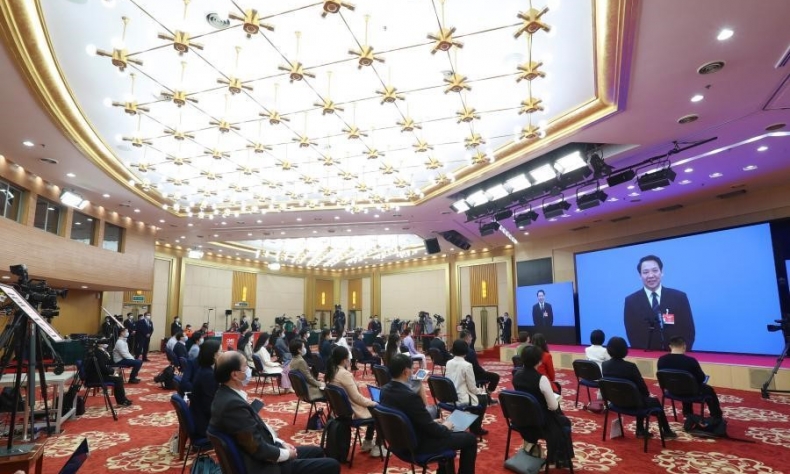China’s Development Priorities for the Next Stage

As India and China both continue to confront global challenges and pursue economic recovery, it is heartening to see the path they are both on.
Beijing is hosting one of the most important events in China’s political calendar—the Two Sessions. It gathers more than 5,000 national lawmakers and political advisors to discuss the nation’s plans and priorities for the coming year and beyond, which is also in line with the 14th Five-Year Plan (2021-2025) China formulates. This reminds me of the financial budget presentation in the Indian parliament attended by both houses, Rajya Sabha and Lok Sabha, which usually happens in February every year.
Economic development, technology and climate change are on the top of the agenda this year as the Two Sessions are progressing. A report on the work of the Chinese government delivered by Chinese Premier Li Keqiang highlights the work done last year, a year marked by the COVID-19 pandemic along with the induced economic turmoil. China has responded quickly on both fronts which leads to its robust economic recovery and proves the effectiveness of its steps taken.
China formulated macroeconomic policies to deal with the market demand and supply shocks for ensuring the economy remains stable. Its gross domestic production (GDP) in 2020 reached 101.6 trillion yuan (about US$15.4 trillion), up by 2.3 percent, and the consumer price index (CPI) rose by 2.5 percent. A basic equilibrium was maintained with regard to the balance of payments, and foreign exchange reserves were kept at over US$3 trillion.
China gave utmost priority to safeguarding stable employment for the wellbeing of the people. A total of 11.86 million urban jobs were created in 2020 and the year-end surveyed urban unemployment rate was 5.2 percent. Scientific and technological innovation played a key role in sustaining the momentum of development and keeping economic and societal engines running forward. The 98.99 million rural residents formerly living below the current poverty line were lifted out of poverty, and absolute poverty has been eliminated in all of the 832 impoverished counties and the 128,000 poor villages across the country.
While looking back at what China did last year, we also need to see what plans China has for its future. The 14th Five-Year Plan under deliberation acts as a roadmap for the next five years and clarifies the priorities for development. Needless to say, this plan is discussed in detail and issues highlighted include sustaining healthy economic growth, promoting innovation-driven industry transformation, as well as urbanization, rural revitalization, and urban-rural coordinated development. These strategic areas, along with improving regional development and promoting green development, are the key fronts.
While China continues to move forward with its agendas, India too is on a revival journey whether it be coming out of the economic recession or swiftly vaccinating its people. The Union Budget presented by the finance minister of India shared the government’s vision based on the six pillars—health and wellbeing, physical and financial capital and infrastructure, inclusive development for aspirational India, reinvigorating human capital, innovation and R&D, and “Minimum Government, Maximum Governance.” India’s fiscal deficit stands at 9.5 percent of its GDP for the fiscal year 2020-21 and is estimated to be 6.8 percent in 2021-22. Its real GDP for the years 2018-19 and 2019-20 stood at Rs140.03 trillion and Rs145.69 trillion, respectively, showing a growth of 4 percent and 6.5 percent year-on-year.
As India and China both continue to confront global challenges and pursue economic recovery, it is heartening to see the path they are both on.
The author is an entrepreneur in Pune, India, who has dealt with Chinese manufacturing professionals in Shenzhen, China. He is a keen learner of globalization trends, supply chains, manufacturing and trade.
 Facebook
Facebook
 Twitter
Twitter
 Linkedin
Linkedin
 Google +
Google +










